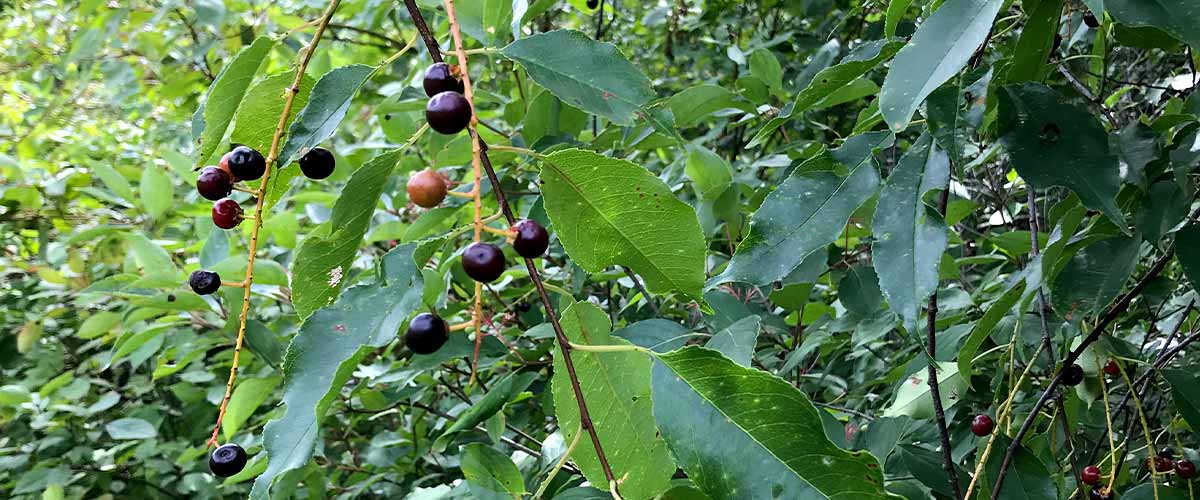With their striking blossoms and deep reddish-black fruits, black cherry trees are a beautiful addition to landscapes across much of North America. But how can you identify these trees based on visual features alone? This guide provides useful facts and pictures to help you recognize black cherry trees.
An Overview of Black Cherry Trees
Scientifically known as Prunus serotina, the black cherry is a large deciduous tree that can grow 50-60 feet tall and 20-30 feet wide at maturity. It is native to eastern and central North America, ranging from Nova Scotia to Florida and west to Texas, South Dakota, and Manitoba.
The black cherry is commonly found in woodlands, fence rows, and open fields. It thrives in various soil types and conditions. The tree produces fragrant white flowers in the spring, reddish-black fruits in the summer, and yellow to red foliage in the fall.
Identifying Black Cherry Trees by Their Bark
-
The mature bark is dark gray to blackish with prominent horizontal lenticels (raised pores). It has a rough, scaly texture that peels and curls as it ages.
-
On younger branches and trunks, the bark has a reddish-brown or bronze cast with horizontal stripes or lines.
-
The inner bark has an aromatic, bitter almond scent when scratched or freshly cut. This is a key way to identify black cherry.
The Simple Leaves and Flowers
-
The alternate, elliptical leaves have finely toothed margins and measure 2-5 inches long They are dark green and smooth above with paler green undersides
-
Clusters of small white flowers bloom in pendulous racemes 3-6 inches long in late spring. The flowers have a maraschino-cherry scent.
-
Leaves turn yellow to red in autumn before falling.
Recognizing the Fruits of Black Cherry
-
Flowers give way to tiny pea-sized cherries that ripen to a deep purple-black in mid to late summer
-
Cherries occur in drooping clusters, with each fruit about 1/3 inch in diameter containing a single seed.
-
The juicy flesh is bright red, ripening to a dark, almost black color.
-
Birds and wildlife relish the fruits, spreading seeds through their droppings. This helps propagate new black cherry trees.
Where to Find Black Cherry Trees
Look for black cherry trees in various settings where they naturally occur:
- Forest edges, woodland borders, and fence rows
- Roadsides, fields, pastures, and disturbed areas
- Parks, residential areas, and urban open spaces
- Riparian zones along streams and bottomlands
Focus your search efforts in eastern and central North America. But also keep an eye out for ornamental black cherry cultivars planted horticulturally beyond the tree’s native range.
Appreciating Black Cherry’s Seasonal Interest
Beyond identification, take time to appreciate the seasonal display that black cherry trees provide:
- Fragrant white blooms signaling spring
- Lush green summer foliage provide shade
- Drooping clusters of shiny black fruits attract birds
- Fall colors ranging from golden yellow to bright crimson
Take notice next time you spot a black cherry tree. Once you know what features to look for, it’s easy to identify and enjoy this beautiful arbor addition.
Find on the Map
Enter keywords to search on the arboretum map.
Black Cherry (127-U* is in the Meadow Lake
East Side and West Side
Identifying Wild Black Cherry Trees
FAQ
How do I identify a black cherry tree?
What are the cons of a black cherry tree?
Is black cherry a good yard tree?
Can you eat cherries from a black cherry tree?
- The Ultimate Guide to Growing Strawberries in Raised Beds - August 8, 2025
- No-Dig Garden Beds: The Easiest Way to Grow a Beautiful Garden - August 6, 2025
- How to Protect and Preserve Wood for Raised Garden Beds - August 6, 2025

